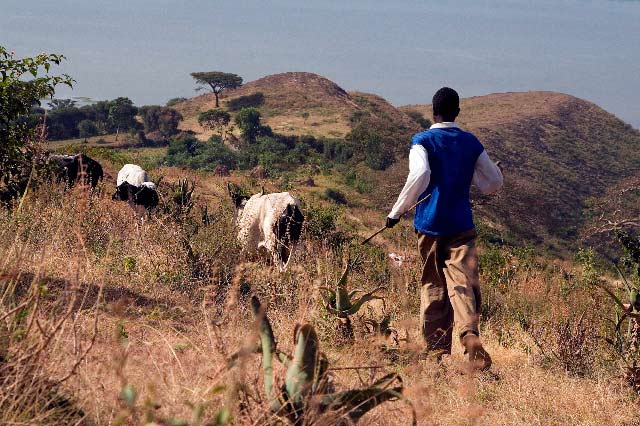Conventional wisdom suggests that leaders should be in front of the crowd, leading from the front. But a lesson I learned from childhood seems to suggest otherwise – it is the concept of leading from behind.
During the eighties, growing up in the West African country of Cameroon, living in the Bamenda plateau of the North West region, I had the privilege of being exposed to the cattle herding lifestyle of the Mbororos and Fulanis. As a kid growing up in a land inhabited by thousands of nomads, it was not uncommon to see cattle herders, sticks in hand, moving their cattle in the direction of greener pastures as the seasons changed – typically downhill during the dry season and uphill during the rainy season. My peers and I, like most children, had fun watching them and actually sang this popular song to cheer them on: “Eiyo cawo, Njama-Njama cawo, Ya mami go for Ngaoundere for sika belle cawo.”
I must admit that the song albeit being quite melodious is somewhat meaningless; something like “hey cow, huckleberry cow, your mother went up North to get pregnant, cow” – how funny is that? Like most people, the lessons to be learned from this unique cattle herding culture escaped me.
Fast forward to 2010. Several years later, a couple of months ago, I happened to read a lesson-packed book written by Richard Stengel entitled Mandela’s Way: Lessons on Life, compiled after three years of living, traveling with and interviewing Nelson Mandela. In this book, Stengel shares 15 invaluable life lessons learned from “the last pure hero on the planet”, Mr. Nelson Mandela.
Without taking away from the wisdom of the other lessons, the fourth lesson “lead from the back,” immediately caught my attention. “How could I have so totally missed this valuable lesson on leadership and teamwork that clearly challenges the conventional wisdom of leading from the front?” I found myself wondering sheepishly. Here I was, some twenty years later, and it made a lot of sense.
What does it mean to lead from the back?
Well as you might know, Nelson Mandela at the age of eight or nine, spent sometime herding his mother’s cattle. This experience greatly impacted him, instilling in this great man the effectiveness and importance of directing from behind; a lesson learned in childhood that was to immensely impact a journey that now has him down in the history books as one of the greatest leaders the world has ever seen.
This concept is best explained in the words of the great Nelson Mandela himself, as quoted by Richard Stengel: “…When you want to get the cattle to move in a certain direction, you stand at the back with a stick, and then you get a few of the cleverer cattle to go to the front and move in the direction that you want them to go. The rest of the cattle follow the few more energetic cattle in the front, but you are really guiding them from the back.”
What an ah-ha moment! From the primitive nomads of Africa to a great world leader, here is a lesson to be learned about the core principle of true leadership. Although as a child I had totally missed the important lesson behind this concept, I now understood why the positioning of cattle rearers and even shepherds behind their flock works best in keeping the herd under control. It all came together at this point.
Lessons across cultures
There is no denying the fact that looking into the Nomad’s unique leadership style through a different lens yields great learning experiences that have the power to improve our leadership practices regardless of the company, organization, or any setting we find ourselves in.
In a more “modern” sense, the idea of leading from the back is exemplified by leaders who embrace the TEAM concept (Together Everyone Achieves More) by delegating leadership functions to capable, enthusiastic and energetic players on the team. These leaders are not necessarily in front running the show. Instead, they are operating from the back, matching people and skills and placing them in strategic positions to get the job done. Good leaders listen to varying opinions, they shape other people’s thoughts, empowering and encouraging them to do what is expected of them. A productive leader does not seek to be “in charge” at all times.
What drives the herder to stay behind, to guide and to observe his cattle, is the same principle that drives the CEO of a fortune 500 company to run a strategic marketing operation that functions to keep the company in tact and successful. If this is not already happening, then such a leader will do well to adopt this nomadic principle into his organization.
Thanks to a primitive herding lifestyle, Nelson Mandela learned a lesson that propelled him to the ranks of one of the most inspirational leaders the world has ever known — at least in my view. Although we may not have lived Mr. Mandela’s experience, we can learn from it, and use it to shape our notions of leadership.
Zuzeeko blogs on www.zuzeeko.com where he tackles issues of fundamental human rights, law, politics, business, social trends and other issues that will get you thinking.
(First published in DUNIA Magazine Issue 3)

